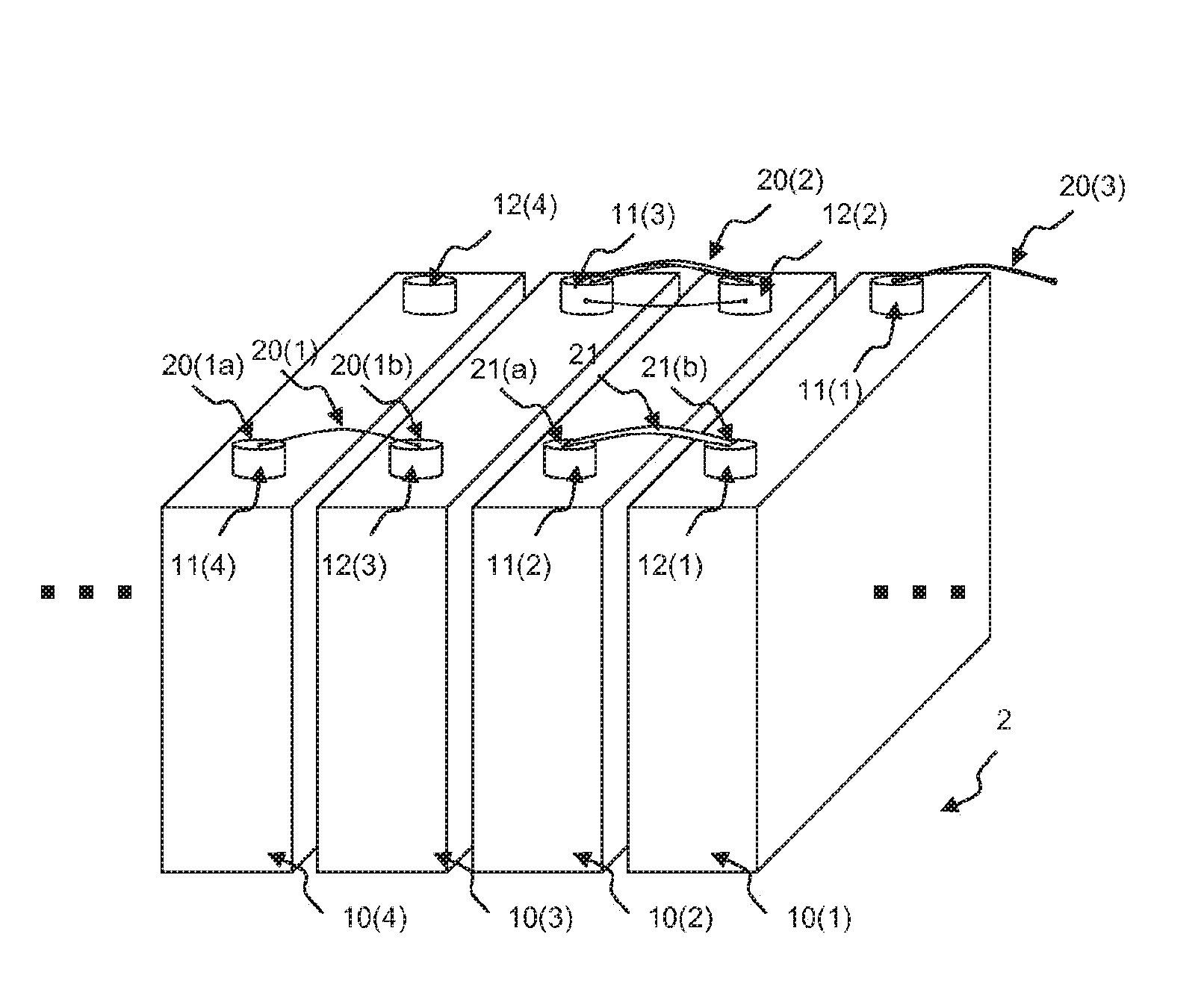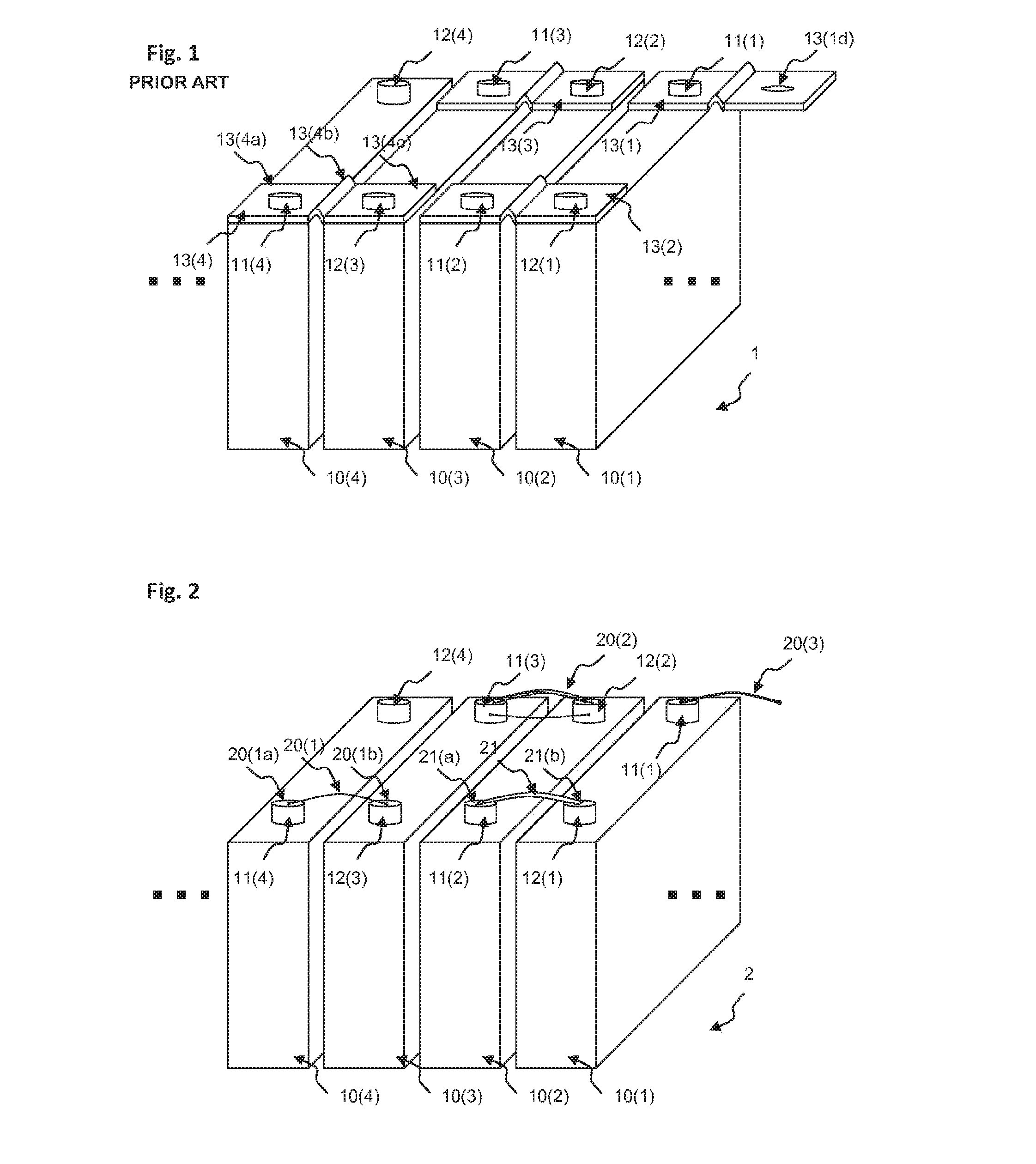Electric cell connector for a battery module
- Summary
- Abstract
- Description
- Claims
- Application Information
AI Technical Summary
Benefits of technology
Problems solved by technology
Method used
Image
Examples
Embodiment Construction
[0022]Identical reference symbols denote identical device components in all the figures.
[0023]FIG. 1 shows four battery cells 10(1), 10(2), 10(3), 10(4) of a battery module 1 with cell contacts 11(1), 11(2), 11(3), 11(4), 12(1), 12(2), 12(3), 12(4) which are connected to one another in an electrically conductive manner via electric cell connectors 13(1), 13(2), 13(3), 13(4) resulting in a series connection of the battery cells 10(1), 10(2), 10(3), 10(4), according to an embodiment in accordance with the prior art. For example, the positive pole of the battery cell 10(1) is connected by means of the cell contact 12(1) via the electric cell connector 13(2) to the negative pole of the battery cell 10(2) by means of the cell contact 11(2).
[0024]The electric cell connector 13(4) comprises a first connecting element 13(4a), a second connecting element 13(4c) and a bent connecting element 13(4b) which electrically contacts the first connecting element 13(4a) to the second connecting elemen...
PUM
| Property | Measurement | Unit |
|---|---|---|
| Diameter | aaaaa | aaaaa |
| Diameter | aaaaa | aaaaa |
| Length | aaaaa | aaaaa |
Abstract
Description
Claims
Application Information
 Login to View More
Login to View More - R&D
- Intellectual Property
- Life Sciences
- Materials
- Tech Scout
- Unparalleled Data Quality
- Higher Quality Content
- 60% Fewer Hallucinations
Browse by: Latest US Patents, China's latest patents, Technical Efficacy Thesaurus, Application Domain, Technology Topic, Popular Technical Reports.
© 2025 PatSnap. All rights reserved.Legal|Privacy policy|Modern Slavery Act Transparency Statement|Sitemap|About US| Contact US: help@patsnap.com


